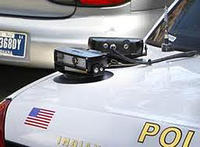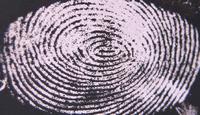-
The FBI uses hackers’ methods in its surveillance programs
The U.S. government is planning to expand its suspect surveillance programs to include tactics which are commonly used by computer hackers.The FBI typically uses hacking in cases involving organized crime, child pornography, or counterterrorism, a former U.S. official said. The agency is less inclined to use these tools when investigating hackers, out of fear the suspect will discover and publicize the technique.
-
-
Locating criminals by tracking their cell phones’ digital fingerprints
To keep from being tracked and getting caught, criminals use evasion tactics such as modifying the built-in ID code in their cell phone or swapping out SIM cards, making it impossible for law enforcement to track the criminals down by relying solely on cell phone signals. German engineers found, however, that the radio hardware in a cellphone — a collection of components like power amplifiers, oscillators, and signal mixers — all introduce radio signal inaccuracies. When these inaccuracies, or errors, are taken together, as seen in the digital signal sent to a cell tower, the result can be read as a unique digital signal –a digital fingerprint. These digital fingerprints do not change even if the built-in ID code has been modified, or the SIM card has been swapped out.
-
-
U.S. Appeals Court: govt. does not need search warrant to track cellphones

Law enforcement agencies have won a victory Tuesday when a federal appeals court ruled that government authorities could extract historical location data directly from telecommunications carriers without a search warrant. The ruling by the U.S. Court of Appeals for the Fifth Circuit is the first ruling directly to address the constitutionality of warrantless searches of historical location data stored by cellphone service providers. He appeals court said that historical location data is a business record which is the property of the cellphone provider. The appeals court also said that the collection of such data by authorities does not have to meet a probable cause standard as outlined under the Fourth Amendment, which protects against unlawful search and seizure and requires a search warrant.
-
-
Angry lawmakers warn NSA to curb surveillance operations
John Inglis, the deputy director of the National Security Agency (NSA), told angry lawmakers yesterday that his agency’s ability to analyze phone records and online behavior is greater than what the agency had previously revealed. Inglis told members of the House Judiciary Committee that NSA analysts can perform “a second or third hop query” through its collections of telephone data and Internet records in order to find connections to terrorist organizations. Representative James Sensenbrenner (R-Wisconsin), the author of the 2001 Patriot Act, warned the intelligence officials testifying before the committee that unless they rein in the scope of their surveillance on Americans’ phone records, “There are not the votes in the House of Representatives” to renew the provision after its 2015 expiration. “You’re going to lose it entirely,” he said.
-
-
Automatic license plate readers used to collect, store data on millions of Americans

Automatic license plate readers are the most widespread location tracking technology available to law enforcement. Mounted on patrol cars or stationary objects like bridges, they snap photos of every passing car, recording their plate numbers, times, and locations. At first the captured plate data was used just to check against lists of cars law enforcement hoped to locate for various reasons (to act on arrest warrants, find stolen cars, etc.). Increasingly, however, all of this data is being fed into massive databases that contain the location information of many millions of innocent Americans stretching back for months or even years.
-
-
Highly sensitive fingerprint technique developed

Researchers have developed a new and extremely sensitive method for visualizing fingerprints left on metal surfaces such as guns, knives, and bullet casings. The technique utilizes color-changing fluorescent films and the researchers say that it can be used to complement existing forensic processes.
-
-
Thermal imaging could bolster biometric security
Fingerprints and iris recognition will soon give way to thermal imaging.The pattern of blood vessels located just beneath the skin of a person’s face can be isolated using an infrared thermal imaging camera. The blood vessel patterns are as unique as a fingerprint and iris, but are almost impossible to forge.
-
-
CBP drones may be armed with non-lethal weapons
Customs and Border Protection (CBP) currently has eight Predator drones used on the northern and southern borders, and two more drones watching the Caribbean. The drones are equipped with high-tech cameras. Critics say drones are not an efficient way to monitor the border, and that they lead to few arrests and seizures. Other critics are worry about something else: a recent CBP report show that the agency is considering arming these drones with “expendables or non-lethal weapons designed to immobilize [targets of interest].”
-
-
Highly portable X-ray imaging system developed
Los Alamos National Laboratory and Tribogenics have developed the MiniMAX (Miniature, Mobile, Agile, X-ray) camera to provide real-time inspection of sealed containers and facilities.MiniMAX is an alternative to the large, expensive, and fixed facilities presently required for security inspections using X-ray imaging. The complete MiniMAX portable radiography system weighs less than five pounds.
-
-
NYPD police chief Raymond Kelly criticizes NSA for secrecy surrounding surveillance program
NYPD commissioner Raymond Kelly yesterday pointedly criticized the secrecy surrounding the National Security Agency (NSA), saying that Americans would probably be comfortable knowing their conversations are monitored. Kelly also said that if Snowden is correct in his allegations that the surveillance system can be readily abused, then there is a need for more oversight of the NSA. He said that more transparency about the checks on and supervision of what NSA analysts can monitor would help put the public at ease.
-
-
Webcast of Forensic Handwriting Analysis Conference available online
On 4-5 June 2013 NIST and partnering organizations hosted the Measurement Science and Standards in Forensic Handwriting Analysis Conference. In case you missed this event or would like to view/listen again to the presentations, the archived video of the Webcast is now available online.
-
-
Detecting explosives, not toothpaste
Researchers want airports, border checkpoints, and others to detect homemade explosives made with hydrogen peroxide without nabbing people whose toothpaste happens to contain peroxide. This is part of the challenge faced in developing a portable sensor to detect a common homemade explosive called a FOx (fuel/oxidizer) mixture, made by mixing hydrogen peroxide with fuels.
-
-
NSA director: surveillance programs prevented “dozens” of terror attacks
Gen. Keith Alexander, the director of the National Security Agency (NSA) and commander of the U.S. Cyber Command, told lawmakers yesterday (Wednesday) that the NSA’s electronic surveillance programs have been indispensable in thwarting “dozens” of terrorist attacks on targets in the United States and abroad. He told the senators that securing a “cyber arena” could be done without infringing upon the privacy rights of Americans. “We do not see a tradeoff between security and liberty,” Alexander said, later adding, “We are trying to protect Americans.”
-
-
ACLU files lawsuit challenging NSA's phone surveillance
In the wake of the past week’s revelations about the NSA’s surveillance of phone calls, the yesterday American Civil Liberties Union (ACLU) filed a lawsuit charging that the program violates Americans’ constitutional rights of free speech, association, and privacy.
-
-
Edward Snowden, an NSA contractor employee, says he is the source of NSA leaks
Edward Snowden, a 29-year-old former technical assistant in the CIA and more recently an employee of the defense contractor Booz Allen Hamilton, has identified himself as the source of the leaks about three massive NSA surveillance schemes. Snowden says the NSA’s surveillance activities are all-consuming; these activities “are intent on making every conversation and every form of behavior in the world known to [the NSA].” He said that once he concluded that the NSA’s surveillance scheme would soon be irrevocable, it was just a matter of time before he chose to act. “What they’re doing” poses “an existential threat to democracy,” he said.
-
- All
- Regional
- Water
- Biometrics
- Borders/Immig
- Business
- Cybersecurity
- Detection
- Disasters
- Government
- Infrastructure
- International
- Public health
- Public Safety
- Communication interoperabillity
- Emergency services
- Emergency medical services
- Fire
- First response
- IEDs
- Law Enforcement
- Law Enforcement Technology
- Military technology
- Nonlethal weapons
- Nuclear weapons
- Personal protection equipment
- Police
- Notification /alert systems
- Situational awareness
- Weapons systems
- Sci-Tech
- Sector Reports
- Surveillance
- Transportation
Advertising & Marketing: advertise@newswirepubs.com
Editorial: editor@newswirepubs.com
General: info@newswirepubs.com
2010-2011 © News Wire Publications, LLC News Wire Publications, LLC
220 Old Country Road | Suite 200 | Mineola | New York | 11501
Permissions and Policies
Editorial: editor@newswirepubs.com
General: info@newswirepubs.com
2010-2011 © News Wire Publications, LLC News Wire Publications, LLC
220 Old Country Road | Suite 200 | Mineola | New York | 11501
Permissions and Policies
